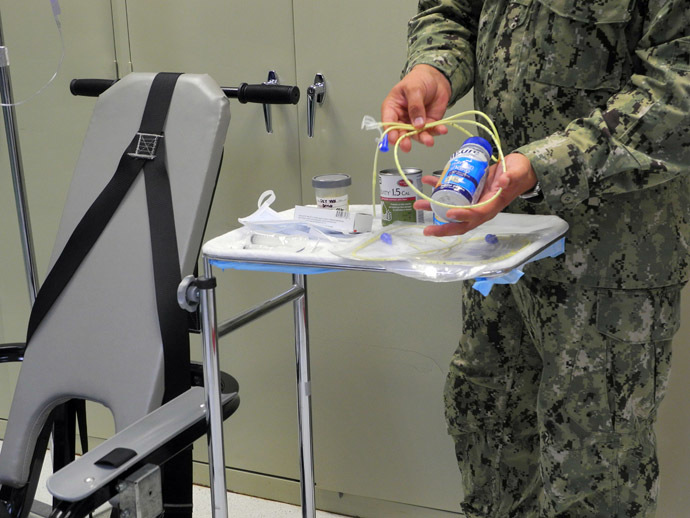A delegation of Russia’s high-ranking diplomats and representatives of the judicial system has in an unprecedented move visited the Guantanamo Bay prison, as Moscow has stepped up efforts to secure release of the only Russian national there.
The Russian VIP visitors were toured around the facility, where
they spent several hours Friday, speaking to senior
representatives of the Department of Defense and the commanders
of the detention center. The central part of their visit was an
hour-long conversation with the Russian national, Ravil Mingazov,
who has been detained for over a decade at Guantanamo without
charge.
Russian Foreign Ministry's Commissioner for Human Rights,
Konstantin Dolgov, said the delegation’s basic aim was to ensure
Mingazov’s “speediest possible release.”
The US authorities might review Mingazov’s case “within
weeks” and will decide whether he is to be taken to a
military court, Dolgov told Russian media at a briefing following
the visit.
“His presence at the Guantanamo prison by itself is violation
of his basic rights, because all of the detainees are kept there
in the so-called legal vacuum,” Dolgov told RT by telephone.
“There is no due process, no proper investigation. They are
denied access to justice.”
The human rights commissioner said he assumed the prospects for
achieving Mingazov’s release were good.
He said the detainee asked for books and newspapers in Russian.
Dolgov, however, would not go into detail about what Mingazov
said, when asked to describe conditions at the center. The
diplomat only said the delegation was analyzing the information
it received.
The information on life inside Guantanamo keeps flowing in from
the lawyers of the 155 detainees, still held at the facility.
According to attorneys, the number of hunger strikers at the
prison has gone up in the past month, and now stands at 33.
The US military who run the facility have refused to release any
updates, as it did during the massive months-long hunger strike
last year.
“JTF-Guantanamo allows detainees to peacefully protest, but
will not further their protests by reporting the numbers to the
public,” RT was informed this week in an e-mail from John
Filostrat, US Navy Commander and Director of Public Affairs.
“The release of this information detracts from the more
important issues, which are the welfare of detainees and the
safety and security of our troops… We closely monitor any changes
in detainee health status but we will not report statistics on
individual protests.”

Clive Stafford Smith, who advocates for several of the detainees,
claims the US military is using some painful tactics to try and
break up the hunger strike.
“If a prisoner from Camp 6, which is the least bad camp, goes
on hunger strike, they automatically get transferred not just to
Camp 5, but to Camp 5 Echo, which really has been the most
abusive place in all of Guantanamo Bay,” Stafford Smith told
RT. "Prisoners are held in all-steel cells and denied the
most basic human rights, just as a punishment for going on
strike.”
He added that controversial force-feeding techniques were
extensively employed by Guantanamo Bay personnel. The practice,
condemned by the World Medical Association as “a form of
inhuman and degrading treatment,” is according to the
detainees’ attorney, purposefully applied in the most painful
way.
“They used to leave the tubes up the prisoners’ noses, so
that it would not hurt so much. They are still pulling these
tubes out every single time twice a day and forcing them back up
each time. They are still forcing far too much food far too
quickly into the prisoner, making prisoners sick. If they are
sick, they just carry on doing it.”
It’s been 12
years in January since the first detainees arrived at
Guantanamo Bay prison. Out of 779 detainees held at the facility
over that period of time, only seven have actually been convicted
and sentenced. Out of 155 inmates currently remaining at the
detention center, 77 have been cleared for release.
President Obama made a promise to close down Guantanamo when he
was campaigning for his first term back in 2008. He has been
explaining his further inability to fulfill the promise by having
his hands tied by the Congress, which restricted transfers of
Gitmo detainees. A defense
bill, passed at the end of December 2013, might help
facilitate an end to the deadlock, as among other things the bill
eases up the process for prisoners’ transfers.
In April 2013, Obama expressed his wish to renew efforts to close
the Guantanamo prison. Eleven detainees have been released
since that time. In comparison, the previous three years saw just
five transfers from the facility.
